 Welcome to Matt Forrest Esenwine, the first Author Interview of 2023! Wahoo!
Welcome to Matt Forrest Esenwine, the first Author Interview of 2023! Wahoo!
Last year, I joined PB22 Peekaboo, a picture-book promotion group of which Matt was a member (along with a few dozen other fine writers). It was impossible NOT to notice how hard Matt was working and how much it was paying off in terms of publishing and PR successes. At one point, I made a mental note to find out more about that, and today’s the day to make it happen!
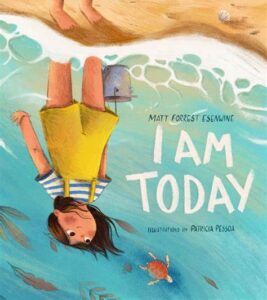 Matt’s work has appeared in various poetry anthologies by Lee Bennett Hopkins, J. Patrick Lewis, and others, though he’s also published a range of his own picture books including the OPB-approved I Am Today, which came out in March 2022. He’s got more on tap for 2023 and beyond, so we’ll learn about that right here, too.
Matt’s work has appeared in various poetry anthologies by Lee Bennett Hopkins, J. Patrick Lewis, and others, though he’s also published a range of his own picture books including the OPB-approved I Am Today, which came out in March 2022. He’s got more on tap for 2023 and beyond, so we’ll learn about that right here, too.
Now, without more ado, let’s find out more about Matt’s secret to success!
RVC: First and most important question—how often do people misspell your name? As someone with an (apparently) easily misspellable name myself, I’m unduly aware of potential spelling disasters, and your double r (Forrest) and single s (Esenwine) seem fraught with linguistic peril.
MFE: Linguistic Peril is actually the name of the new thrash metal group I’m forming, so thanks for the plug.
RVC: Happy to help. Rock and roll, baby!
MFE: As for people misspelling my name, the answer is: googol. And no, I don’t mean to look the answer up online. I’m talking about the mathematical googol (which, ironically, you’ll likely end up looking up online). Ten to the 100th power–that’s how often my name gets mangled. Over the years, both my father and I have seen just about every permutation possible, from Essenwein (the original Bavarian spelling) to Eisenstein to Entwhistle. I wish I were joking, but I’m not.
In fact, the most ridiculous spelling came from the State of New Hampshire when my father, Forrest Esenwine, was a selectman in our town. Someone at the state must have seen his name written in cursive and mistook the “w” for a “ur” and mailed out an envelope addressed to Selectman Forrest Esenurine. Way to go, New Hampshire.
RVC: [Making mental checkmark against the previously-believed-to-be-awesome-state-of-New-Hampshire.] At least your name is more prone to spelling problems than speaking. Is that fair? Mine gets mangled both in spelling and how people pronounce it.
MFE: Well, like I said, whether it’s spelling or pronunciation, people still get confused. I mean, it seems pretty straightforward to me; it’s pronounced exactly the way it looks. “ESS-enn-wine.” But people invariably put an “i” after the “e” and say Eisenwine. At least they don’t do the “i before e” thing, because that would just be weird. I’m sure someone will one day, though.
By the way, if you happen to email me, be sure to spell my middle name correctly. My address is matt(at) mattforrest(dot)com, but if you only use one “r” it will end up in the inbox of Matt Forest, councilman for Ashford Borough in England–and a couple of days later he’ll forward it to me. We’ve known each other for nearly 20 years all because people forget the second “r.”
RVC: That British councilman should write picture books too just to confuse things! Now, let’s get back to the regularly scheduled interview. Prior to becoming a children’s book writer, you worked in radio. How did you find your way into that field?
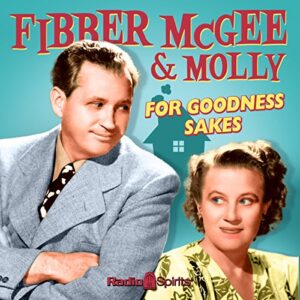 MFE: I walked through the studio door once the “on-air” light was off, and the DJs couldn’t get rid of me. After graduating from high school, I went to Castleton State College [now Castleton University] in Vermont for a Mass Media Communications degree and got a job working part-time in Concord, NH my first summer there. I always loved radio, having grown up listening to my father’s vinyl records of old-time radio programs like Fibber McGee & Molly and Lux Radio Theatre. I was also quite the geek in school (oh, who are we kidding–I was a geek 24⁄7), and I’d write humorous skits and record them–voices, sound effects, and all–onto my dad’s Panasonic cassette recorder. I was also in the drama club, so I think talking to people and telling stories was something that just came naturally to me.
MFE: I walked through the studio door once the “on-air” light was off, and the DJs couldn’t get rid of me. After graduating from high school, I went to Castleton State College [now Castleton University] in Vermont for a Mass Media Communications degree and got a job working part-time in Concord, NH my first summer there. I always loved radio, having grown up listening to my father’s vinyl records of old-time radio programs like Fibber McGee & Molly and Lux Radio Theatre. I was also quite the geek in school (oh, who are we kidding–I was a geek 24⁄7), and I’d write humorous skits and record them–voices, sound effects, and all–onto my dad’s Panasonic cassette recorder. I was also in the drama club, so I think talking to people and telling stories was something that just came naturally to me.
You know how nervous kids get when they have to speak in front of the class? Not this guy.
RVC: What was the most rewarding part of it?
MFE: Free T‑shirts and CDs by artists no one has heard of. Seriously, I had a bunch of ’em!
RVC: Free swag is the best.
MFE: But as much as I enjoyed talking on the air and interacting with listeners–as well as emceeing club events and concerts–I really loved writing and producing commercials and comedy bits. With multi-track production, I could add as many voices, sound effects, and whatnot as I needed to make whatever I was producing sound exactly how I wanted it.
RVC: Why did you shift your creative focus into the writing for children?
MFE: Because as much as I loved radio, radio did not love me. It was back in 2012 when I did the math and realized that if you subtracted daycare and commuting gas from my paycheck, I was netting $150 a month. Here I was, the production director of an 8‑station radio group, an on-air personality with a college degree, and a wall of awards my department had received–and I was making $36,000 a year. So, I decided to be a stay-at-home dad and work on my voiceover business, and at the same time investigate the possibility of a children’s writing career.
I’d been writing poetry since I was kid and had several adult-oriented poems published in various anthologies, and over the years had collected several children’s poems I didn’t know what to do with–so I figured children’s lit might be a worthwhile pursuit. My poetry writing style always seemed like it skewed to a younger audience, anyway. Modern academia loves poems that are obtuse and confounding, and that just wasn’t me. Writing for upper-elementary level feels like a perfect fit.
RVC: Which skills from your radio experiences translated best into this new career path?
MFE: Short-form writing! All my life I’d been writing short, tight little stories–from the skits I was recording on my dad’s cassette recorder to my poems to literally thousands of radio commercials where word economy is paramount. Transitioning to children’s lit was not that much of a stretch! Granted, we’re talking about a different style, age group, and other aspects that don’t translate from radio, but I never have a problem getting my word count down–if anything, once I’m done a picture book rough draft I usually have to figure out how to add words.
RVC: What books proved especially influential to you as you embarked on the writing career?
MFE: All the books I got my hands on. Really, the best education is to read, read, read and see what’s out there and learn how others are doing it. By reading children’s books, I not only learned the market but I also learned what others were doing and how they were doing it. It’s that old expression, “if you want to get better at something, surround yourself with people who are better than you.” That’s what I did! I created a blog to showcase my writing, I tried to connect with as many authors and poets as I could, and just tried to immerse myself in the industry–the creative side as well as the business side.
RVC: Great advice.
MFE: For the record, I like the creative side better. They have cookies.
RVC: If by “cookies” you mean “vanilla meringue cookies,” then you’re absolutely correct! Deliciously so, in fact. Now, your first published piece of children’s lit wasn’t a book, but instead was…
MFE: A poem titled “Apple-Stealing,” which was published on the now-defunct Young Adult Review Network (YARN) website, which the amazingly talented Kip Wilson used to help oversee. YARN loved the poem so much, they nominated it for a Pushcart Prize, which still makes me proud.
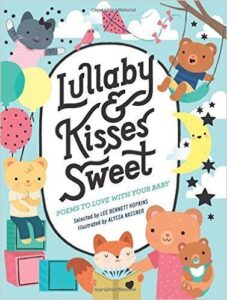 The first paid poem for which I signed a contract was “First Tooth,” which appeared in Lee Bennett Hopkins’ Lullaby & Kisses Sweet (Abrams Appleseed), published in March 2015. However, my first published paid poem actually appeared one week earlier, in Carol-Ann Hoyte’s anthology Dear Tomato: An International Crop of Food & Agriculture Poems.
The first paid poem for which I signed a contract was “First Tooth,” which appeared in Lee Bennett Hopkins’ Lullaby & Kisses Sweet (Abrams Appleseed), published in March 2015. However, my first published paid poem actually appeared one week earlier, in Carol-Ann Hoyte’s anthology Dear Tomato: An International Crop of Food & Agriculture Poems.
RVC: Let’s talk about your own books. What’s the story behind your first published picture book?
MFE: It’s one of those I‑don’t‑know-where-this-idea-came-from-or-what-it-is-but‑I’m‑just-going-to-keep-writing-and-see-where-it-goes kind of thing. Driving home late at night from an SCBWI Meet-Up in Westford, MA, the words, “flashlight opens up the night” popped into my head. I rolled them around and wondered what I could do with them, and by the time I got home I had a few lines I hastily wrote down before going to bed. The rest of the week, I worked on it, thinking it was a poem–since poetry was all I’d written at that point–but about halfway through, I realized I had a picture book manuscript on my hands.
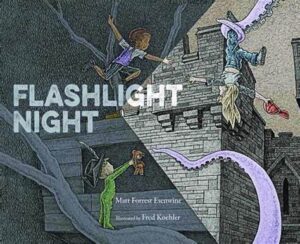 If you’re interested, I published a blog post detailing the entire life of Flashlight Night–from conception to publication. To a non-author that probably sounds dreadful, but for those in the business, I promise it’s a very eye-opening look at how a picture book comes together.
If you’re interested, I published a blog post detailing the entire life of Flashlight Night–from conception to publication. To a non-author that probably sounds dreadful, but for those in the business, I promise it’s a very eye-opening look at how a picture book comes together.
RVC: Thanks for that link! FYI to readers–I’ve covered Flashlight Night before in OPB when I interviewed Fred. What was your favorite part of working with him?
MFE: I actually remember reading that interview a couple of years ago–I had no idea that was your blog! Great interview, Ryan.
RVC: Aw, shucks! It’s easy to do great interviews when you have a great guest. And Fred’s top shelf. I mean, c’mon! His website is www.ilikefred.com after all. Talk about fun!
MFE: As for Fred and I working together, my favorite part was watching his Facebook posts about it. Because that was the extent of our collaboration, other than the back-and-forth he and I would go through separately with our editor, Rebecca Davis. We didn’t really work together at all, which is fairly S.O.P. when it comes to picture books–but Rebecca would occasionally show me what he was doing and ask my opinion (although she obviously had the final say), and a couple of times I had to adjust my text to better represent what Fred was doing with his illustrations.
For example, the original final line was “All was still, within, without…” but with everything Fred had going on with pirates and tigers and bear, oh my, nothing was still at all! So I changed it to “Adventure lingers, stirs about…” and it all worked perfectly.
RVC: What’s the biggest lesson that book taught you?
MFE: Patience is a virtue. Actually, I already knew that, but there’s nothing like the publishing industry to bring that point home. Being my first book, I didn’t realize how long it would take! I wrote it in Aug. 2014, Rebecca contacted me in Jan. 2015 to ask about purchasing it, we signed the contract a few months later, and the book didn’t come out until Sept. 2017. Whew!
I also learned how beautiful a book can be when the author’s words and illustrator’s images blend seamlessly, how involved marketing a picture book can be, and what a Kirkus star feels like.
RVC: That was a well-earned Kirkus star. Congrats on that.
MFE: Thanks!
RVC: You’ve published a good bit of poetry, both through your own books as well as edited anthologies. What is the most important thing people should know or understand about writing poetry for children?
MFE: That you don’t need to be the next Shel Silverstein or Jack Prelutsky or Dr. Seuss. (And folks, Dr. Seuss was never a poet–stop calling him that!) Write in your own style, your own voice. Again, READ. There are myriad ways of writing children’s poetry. And lots of it doesn’t even rhyme. That’s ok! Read, write, repeat.
RVC: What’s the most common misconception about poetry for children?
MFE: That it needs to rhyme or be silly. I come across really, really, tremendously horrible poetry more often than my stomach would care to admit, and it’s because people who don’t understand the craft are trying too hard to be something they’re not–or someone they’re not. I’m proud of the fact that esteemed folks like the late poetry cheerleaders Lee Bennett Hopkins and Paul Janeczko both told me how pleasantly surprised they were when they first read some of my poems because they realized I knew the craft, I understood rhyme and meter and such, and wasn’t trying to be funny all the time. Not that there’s anything wrong with funny poetry, you just don’t need to force it, that’s all.
RVC: In all of your experience in writing poetry for children, what has surprised you the most?
MFE: How difficult it’s been to get a collection published! I’ve been part of numerous anthologies, I have two of my own anthologies coming out in the next couple of years, I’ve even collaborated on a poetry collection with a highly-esteemed children’s poet–yet finding a publisher who wants an entire book of my work has been an elusive task, alas.
RVC: How is your process for writing a poem similar to/different than writing a traditional picture book text?
 MFE: It’s actually not that different, to be honest–the primary difference being that a poem doesn’t necessarily need a narrative. A picture book, even lyrical ones like the kind I tend to write–need some sort of loose narrative or structure to get the reader from point A to point B. With I Am Today, it starts with a young person thinking about how they want to make a difference in the world and concludes with them being satisfied with their accomplishment. With Once Upon Another Time, we show what
MFE: It’s actually not that different, to be honest–the primary difference being that a poem doesn’t necessarily need a narrative. A picture book, even lyrical ones like the kind I tend to write–need some sort of loose narrative or structure to get the reader from point A to point B. With I Am Today, it starts with a young person thinking about how they want to make a difference in the world and concludes with them being satisfied with their accomplishment. With Once Upon Another Time, we show what 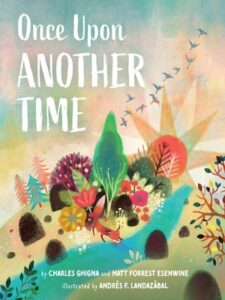 the world used to be like before humans made their mark, compare it with the world as it is now, then travel back to when time began and finally work our way up to the present again–which admittedly sounds confusing for a picture book, but Charles Ghigna and I are delicate with our words and transitions, and it works nicely. Conversely, with a poem, I can focus on a scene, and image, a feeling–and not worry about a narrative structure.
the world used to be like before humans made their mark, compare it with the world as it is now, then travel back to when time began and finally work our way up to the present again–which admittedly sounds confusing for a picture book, but Charles Ghigna and I are delicate with our words and transitions, and it works nicely. Conversely, with a poem, I can focus on a scene, and image, a feeling–and not worry about a narrative structure.
RVC: You had a sizable blog tour with I Am Today—congrats on that! What’s your secret to landing guest blog gigs?
MFE: Bribes. Money, cars, penthouse suites–you know, the usual.
I suppose you could also say that I’ve been in the business long enough that I’ve developed a network of wonderful friends and fellow authors/bloggers who are happy to help spread the news about whatever new book I have coming out. But it’s mostly the money and cars.
RVC: [Making mental note to acquire a fleet of Mercedes S‑Class W140s to use as bribes to support my own writing efforts…] What’s the key to making a guest blog a big hit?
MFE: Being a guest on a top-rated blog like Only Picture Books is certainly one way, along with providing compelling content that’s useful or entertaining. And bribes.
RVC: Wait a second…is there a bag of cash or a Mercedes S‑Class W140 en route? WOWZA! While I’m waiting for my goodies to arrive, tell me–what are your favorite tips to creating meaningful PR for picture books?
MFE: Well, I approach picture book marketing like I approach my social media–because the two are intertwined, of course. I’ll share news about my books, reviews, etc., but I also share personal thoughts and funny interactions I have with my kids. No one wants PR, PR, PR all day, every day–people follow you for more than that. I’m just a regular guy and I hope followers recognize that. If you’re looking for insight into publishing or think I have an interesting enough life that you’d like to learn more about me, that’s great! If you’re looking for selfies of me wearing the latest faux-leather leggings that are soooo trending right now–look elsewhere, my friends.
RVC: Who/what are some of you biggest influences when it comes to writing picture books?
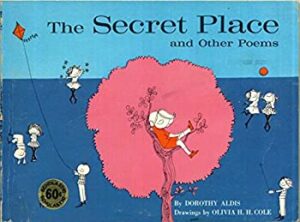 MFE: The biggest influence is Dorothy Aldis, the late children’s poet who wrote The Secret Place and Other Poems, among other books. This was the first book of poems I ever read (my parents bought it for me when I was very young) and I had no idea how big an impact it would have on my love of poetry as well as my style of writing. Not that I write like her, but she had a very easygoing, simple way of saying very thoughtful, insightful things. I’ve also been influenced by friends in the industry who have been, whether they know it or not, mentors to me as I’ve journeyed through this new career: Jane Yolen, Charles Ghigna, Nikki Grimes, David Harrison, and others–and of course, the late Lee Bennett Hopkins and Paul Janeczko.
MFE: The biggest influence is Dorothy Aldis, the late children’s poet who wrote The Secret Place and Other Poems, among other books. This was the first book of poems I ever read (my parents bought it for me when I was very young) and I had no idea how big an impact it would have on my love of poetry as well as my style of writing. Not that I write like her, but she had a very easygoing, simple way of saying very thoughtful, insightful things. I’ve also been influenced by friends in the industry who have been, whether they know it or not, mentors to me as I’ve journeyed through this new career: Jane Yolen, Charles Ghigna, Nikki Grimes, David Harrison, and others–and of course, the late Lee Bennett Hopkins and Paul Janeczko.
RVC: It’s brag time! What do you have on deck for 2023?
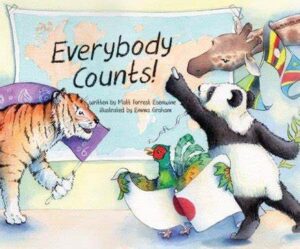 MFE: Well, my picture book, Everybody Counts! (The Little Fig, LLC) just came out on Jan. 1, so I’m excited to celebrate the new year with a new book! It’s very unusual, too, as it teaches the reader how to count to 10 in twelve different languages, from German and French to Arabic and Navajo–and also teaches an ethnic name and food item.
MFE: Well, my picture book, Everybody Counts! (The Little Fig, LLC) just came out on Jan. 1, so I’m excited to celebrate the new year with a new book! It’s very unusual, too, as it teaches the reader how to count to 10 in twelve different languages, from German and French to Arabic and Navajo–and also teaches an ethnic name and food item.
RVC: Congrats on that!
MFE: Later this year (we hope!), I’ll have another picture book, The Thing to Remember about Stargazing (Tilbury House). I say “hope” because it all depends on how soon the illustrator, award-winning Italian artist Sonia Possentini, completes the artwork.
I also hope to have a board book out sometime over the summer and there might be news about a couple of anthologies to which I’ll be contributing!
RVC: Okay, Matt—it’s time for the SPEED ROUND. Are you ready to bring your zip-zappy best? Quick questions and fast answers, please!
MFE: Oh my God, the pressure.
RVC: What’s the funniest word in the English language?
MFE: Tintinnabulation.
RVC: If animals could speak, which would be the most annoying?
MFE: Not sure, but it would likely be one of mine.
RVC: What out-of-date slang do you regularly use?
MFE: Yo!
RVC: What’s the question nobody every asks you but you wish they would?
MFE: “Do you work out?”
RVC: What’s the answer?
MFE: “Nope.”
RVC: Who sets the standard for writing children’s poetry?
MFE: Trick question–no matter whose name I give, one of my poet friends is going to be miffed I didn’t mention them! So, I’ll say Jane Yolen because, well, who’s gonna argue, right?
RVC: In your best Radio Voiceover Guy Voice, tell us your picture book (or children’s poetry) philosophy…in 5 words or fewer.
MFE:
RVC: Consider me impressed. Thanks so much, Matt!
MFE: Thank YOU for the invitation, Ryan! It’s been fun!

